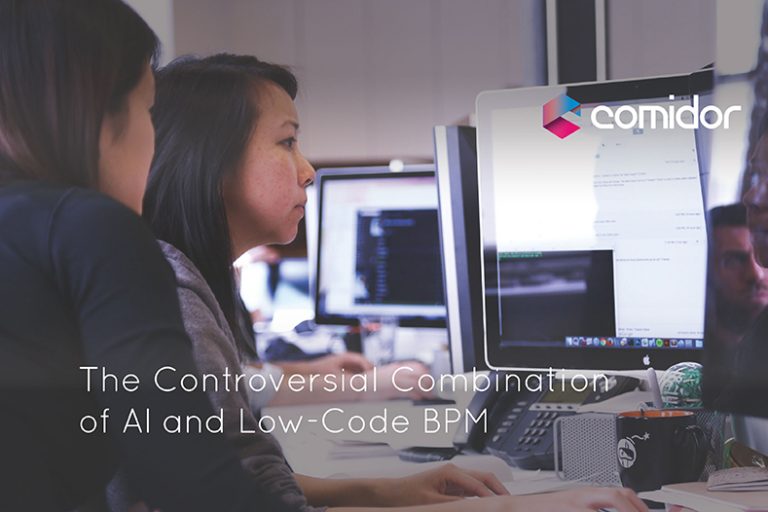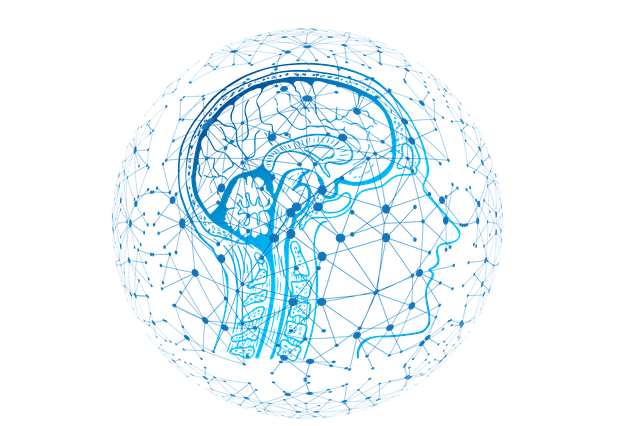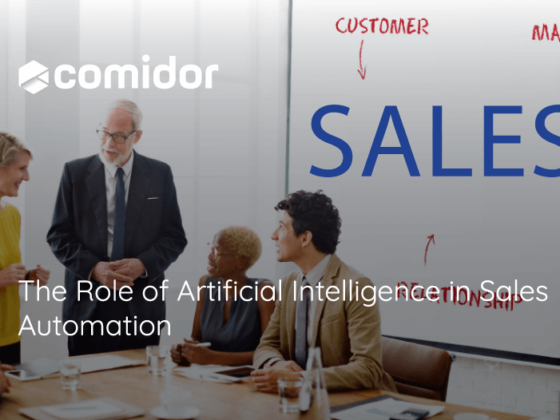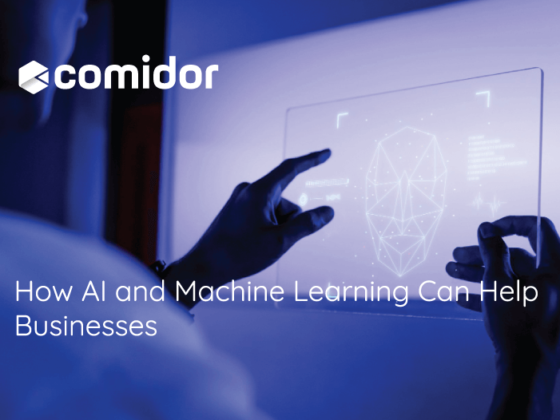Artificial Intelligence is an emerging technology which has started to reform industries and business operations. Many software applications require extensive human interaction to keep the applications up-to-date and accurate. Applications that are empowered with AI are transformed into self-updating and auto-correcting systems. AI and Low-Code BPM are two technologies that if they are combined, they provide superb results in operations automation and business excellence.
What is Artificial Intelligence (AI)?
Artificial Intelligence (AI) is intelligence that it is demonstrated by machines and is often describe machines or computers that mimic cognitive functions that are associated with the human mind.
What is Low-Code development?
 Low- Code is a visual development approach that allows users to create applications by simply dragging and dropping components in a graphic user interface. This development environment assists in the production of fully customized applications that cover different business needs.
Low- Code is a visual development approach that allows users to create applications by simply dragging and dropping components in a graphic user interface. This development environment assists in the production of fully customized applications that cover different business needs.
How AI and Low-Code BPM can be combined?
The combination of those two develops a new Low-Code/No-Code approach to application development. Check out how Comidor assists you in building applications without coding skills.
1. App building by just answering some questions
AI boosts the low-code app development by enabling users to build their applications faster without any effort. The main focus of AI prediction machines is to bring advancement in the low-code environment. A huge impact that AI can bring to Low-Code apps is to enable users to build apps by just answering some questions regarding their needs.
Based on the data that the user has already provided, Artificial Intelligence parses those data by using algorithms. The answers that the users have provided may be depicted as different layers that AI needs to analyze in a logic structure. For example, when a user develops an application, the fields that needs to be used in the app should be identified as the first step of the process. A Deep learning model provides a logical sequence of drawing conclusions similar to those that human brain draws.
These layered structured algorithms, called Artificial Neural Networks ensures rational conclusions and accurate application development which is consistent to human cognitive processes.
2. Predicting the next move
No-Code/Low-Code App builders allow users to create apps without writing lines of code. Artificial Intelligence enhances Low-Code systems’ functionality with next-move predictions that are generated from previous data. This means that users can build apps by only using following suggestions, without doing anything. While a user builds an app in a Low-Code platform, pop-up messages can show up, suggesting the right fields, forms and type of parameters for every case. This functionality makes the application delivery faster and also reduces the error human rate.
3. Intelligent Workflow Management
Workflow systems can be enhanced by integrating AI predictors and assistants in some of the subfields of Workflow Management. Many syntactic inconsistencies can be identified with the assistance of AI methods, that would reduce errors while building an application or managing the workflow of some activities.
Workflow designing may be time-consuming especially when a complex case needs to be designed. Machine Learning assists in the identification of patterns and associations from previous designs and data. Those patterns ensure the optimization of a workflow and the unchallenging design of it. For example, while designing a workflow, AI can make suggestions of the next component that can be used based on similar workflows that have been designed in the past. These predictions enable users without any experience in workflows to design processes with no errors in less time.
4. Transforming sketches into apps
Al-assisted low-code platforms can transform hands-drawn designs into applications. Citizen developers can design a layout on a piece of paper and take a picture of it. Afterwards, the software performs object recognition through a trained vision model and detects design patterns in handwritten content. Finally, it understands the structure and generates the application.
Potential risks of Al implementation
Low-code applications that are developed with the assistance of Artificial Intelligence (AI) lacks emotional decisions. Those applications are hard to alter their responses in different environments. As there are different business occasions sometimes, the predictions that are provided should be based on experience and not just on already acquired data. Cares and concerns are not included in AI decisions which may lead to negative results in any organization’s operations. The best solution is that AI and humans work together, as they can deliver better results rather than working alone.
Conclusion
Artificial Intelligence provides greater efficiency to low-code BPM systems while it reduces the time needed for application and workflow building as well as reduces the error human rate. We should keep always in mind that no matter how machines are programmed, they’re as useful as the data that humans feed them. However, the combination of Al with the human senses and past experience is considered to be the most significant technological development of our time.







